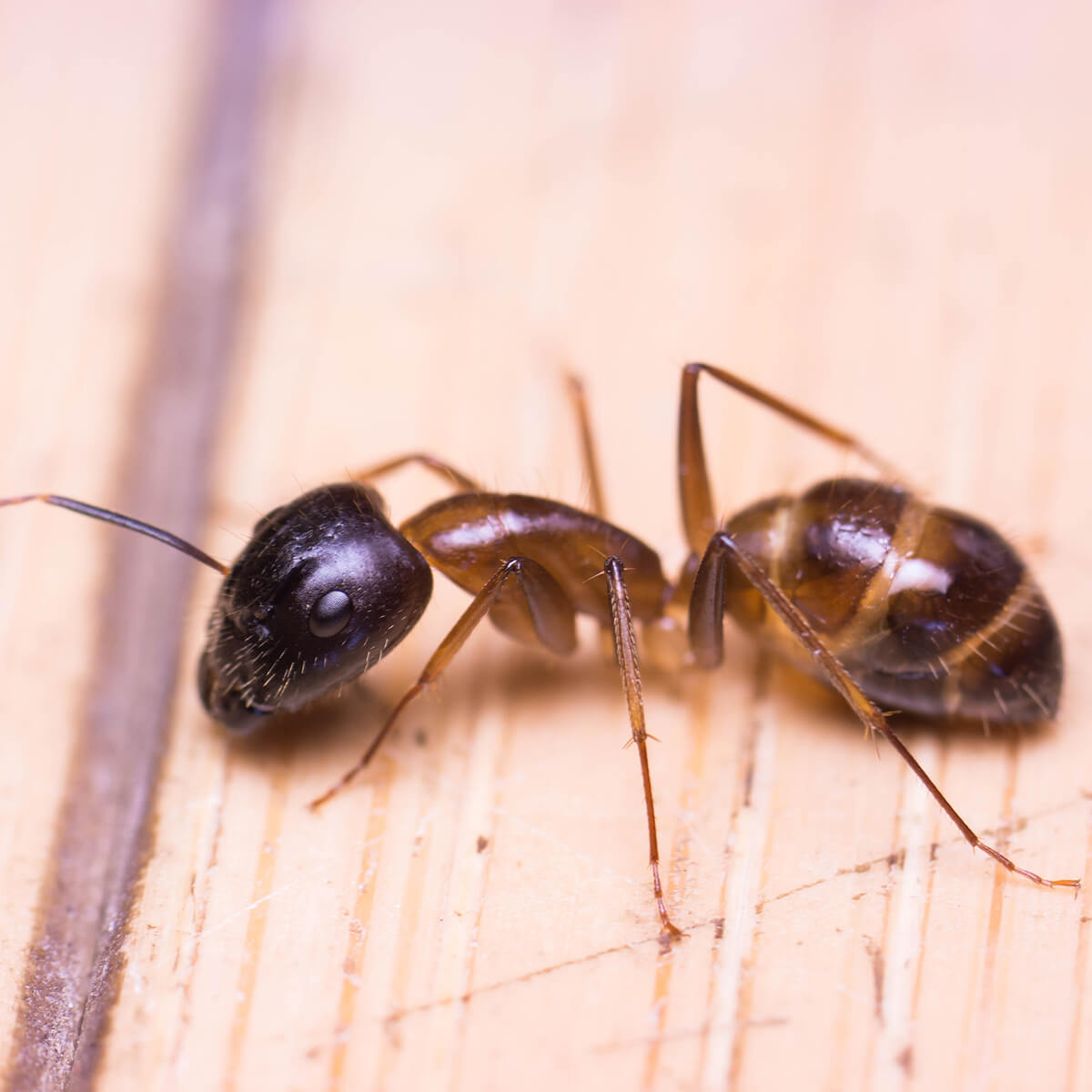Banded Sugar Ant
The banded sugar ant (Camponotus consobrinus) is a native to Australia species and got its name because of its liking for sweet food and sugar.
These ants can be often mistaken with pharaoh ants as their colours are similar. They’re easily recognizable as they are particularly large - they can grow to 15mm.
Sugar ants characteristics

- Colour: Females have black heads, orange thorax and orange-brown band around their gaster; Males are completely black.
- Legs: 6
- Body: Polymorphic, the thorax is longer, have mandibles
- Size: Between 5-15mm, the queen is even larger
- Antennae: 2
- Bites or stings: they do not sting. Soldiers can bite and cause corrosion of the skin as they spray formic acid
- Danger: They can cause constructional damages
- Region: South Eastern Australia
Sugar ant life cycle
- The banded sugar ants have monogynous colonies, which means that they only have one queen. She mates only ones with a male. Although, some rare cases are showing these ants can have multiple queens.
- The sugar ants lay eggs. If the egg is fertilised, it hatches the female ant. If it's not fertilized, it becomes male.
- The hatched eggs develop through complete metamorphosis. They become larva, then pupa and then they develop into fully grown adult ants.
Learn about: Ant Proofing Tips
Sugar ant habits
- Sugar ant nests can be found in various places, including in wood, among rocks, trees and shrubs, in the soil and even under paving stones. Because they can adapt their nesting place, this makes them a perfect pest to infest your home.
- In the colony, there are two different castes of workers - major workers (soldiers) and minor workers.
- The sugar ants are mainly active during the night and the warm summer months.
- The soldier ants often attack other ant species colonies when they cross through them. When provoked, the ant can lift its abdomen and use its mandibles to attack.
- The sugar ants are omnivores. They feed on plant-eating dead and live insects, but they prefer honeydew and sweets.
Facts about sugar ants
- They use numerous different techniques of socialising and to make other ants follow them to a source of food. Things like tandem running, carrying other worker ants, and leaving pheromones for other workers to follow are among their favourite.
- The ant's unique shade of colour may vary due to humidity, temperature and insolation.